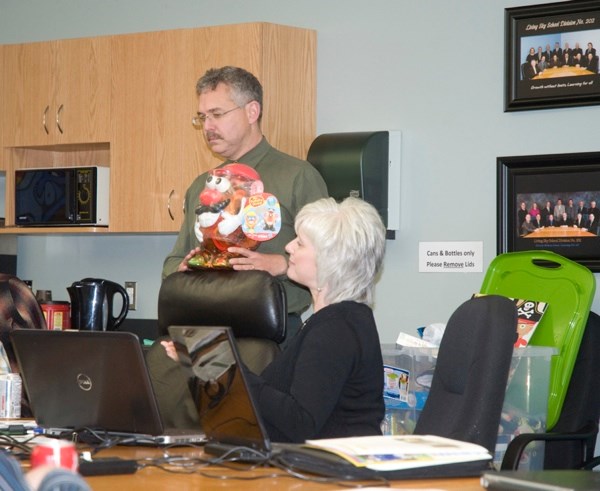Most of Living Sky School Division's English as an Additional Language learners are actually from Canada.
The fact was related to the school division's board of education last week during a report on EAL education.
Ninety-six of the division's 216 EAL students are from Canada, said Cathy Herrick, one of the division's three superintendents of curriculum and instruction. Sixty of those are students in the division's three Hutterian schools, where the first language is German.
Herrick said the remainder are mainly students whose language at home is other than English.
Schools whose EAL population is more than 10 per cent are Unity Composite High School, with 26 EAL students, and Lakeview, Hillsvale and Scott colonies with 22, 21 and 17 respectively.
Schools with between five and 10 per cent EAL students are Spiritwood High School with 11, Cut Knife Elementary School, also with 11, Unity Public School with 12 and Lawrence Elementary School with 19.
Schools with less than five per cent EAL students are Bready Elementary School with five, McKitrick Elementary School with eight, North Battleford Comprehensive High School with 24 and Battleford Central School with 19.
Across the remainder of the division schools, there are 29 EAL students.
The EAL population has shifted over time, said Herrick. Lawrence Elementary School used to have a high proportion, she said, but Unity Composite High School and NBCHS now have high numbers of EAL students.
Highlighting some of the schools in the report, Herrick said at Battleford Central School many of the EAL students there are from Korea and Pakistan. At Lawrence, they are mainly Russian speaking or Spanish speaking. At Unity's high school, many speak Philippine or languages from India. Cut Knife EAL students are mainly children of German speaking Mennonites who have relocated to Canada from Mexico. At NBCHS, there is a large variety of languages, including Spanish, Urdo, Philippine and others.
Having EAL students coming into high school with older skill sets poses some challenges, she said, but added their having a well-established first language does help in developing a second or additional language.
The variety of challenges in meeting the needs of EAL learners has been undertaken by division learning consultant Leanne Merkowsky, who also works in career education.
Merkowsky has worked the last few years to develop supports for teachers and EAL students, said Herrick. Merkowsky encourages getting to know the students' readiness, interests and learning preferences and applying differentiated instruction strategies.
Herrick noted three Living Sky educators have completed or almost completed CERTESL training, a distance course that results in a Certificate in Teaching English as a Second Language. Merkowsky is included in that number, said Herrick, and she has also completed a Sheltered Instruction Observation Protocol course. SIOP, said Herrick, is a framework for organizing instruction and teaching strategies that work for EAL learners and students in general.
Herrick said Merkowsky has found dual language books and other learning tools as additional supports. Most are aimed at younger learners, but she is also researching supports for older learners as well.
Last year, Merkowsky secured a Ministry of Education Grant of $10,000 to create five "Travelling Trunks" filled with practice teaching ideas, lessons, teacher professional development material and hands-on manipulatives to be used division-wide. One will be specifically aimed at the Hutterian schools.
Herrick and fellow superintendent Jim Shevchuk showed the board some of the items being included in the trunks, including books, games, puppets and a Mr. Potato Head toy. In elementary years, it's extremely effective for a child to use their own language and teach it to others while also learning English, as in naming the parts of Mr. Potato Head, said Herrick.
"It's about children sharing," she said.
Another simple but effective tool, she said, is the WhisperPhone, a handheld device for helping young learners develop their reading and spelling abilities and for developing new language skills. What they speak into the device is amplified directly back into their ear to help them hear, produce and correct the proper sounds of the language.
The division is also providing iPads to students at the most basic level of learning, retrieving them after the students progresses to the next level and redistributing them. This year 11 iPads have been distributed. Last year there were 20.
Even readily available tools such as the translation functions of Microsoft Word and online translation resources have been tapped. These are tools with no extra costs, Herrick noted.
Shevchuk noted the division's digital newsletters can be translated so families can find out in their own language what's going on in the division.
He also noted the division has moved away from the costly Rosetta Stone language software to Duolingo, which is free.




